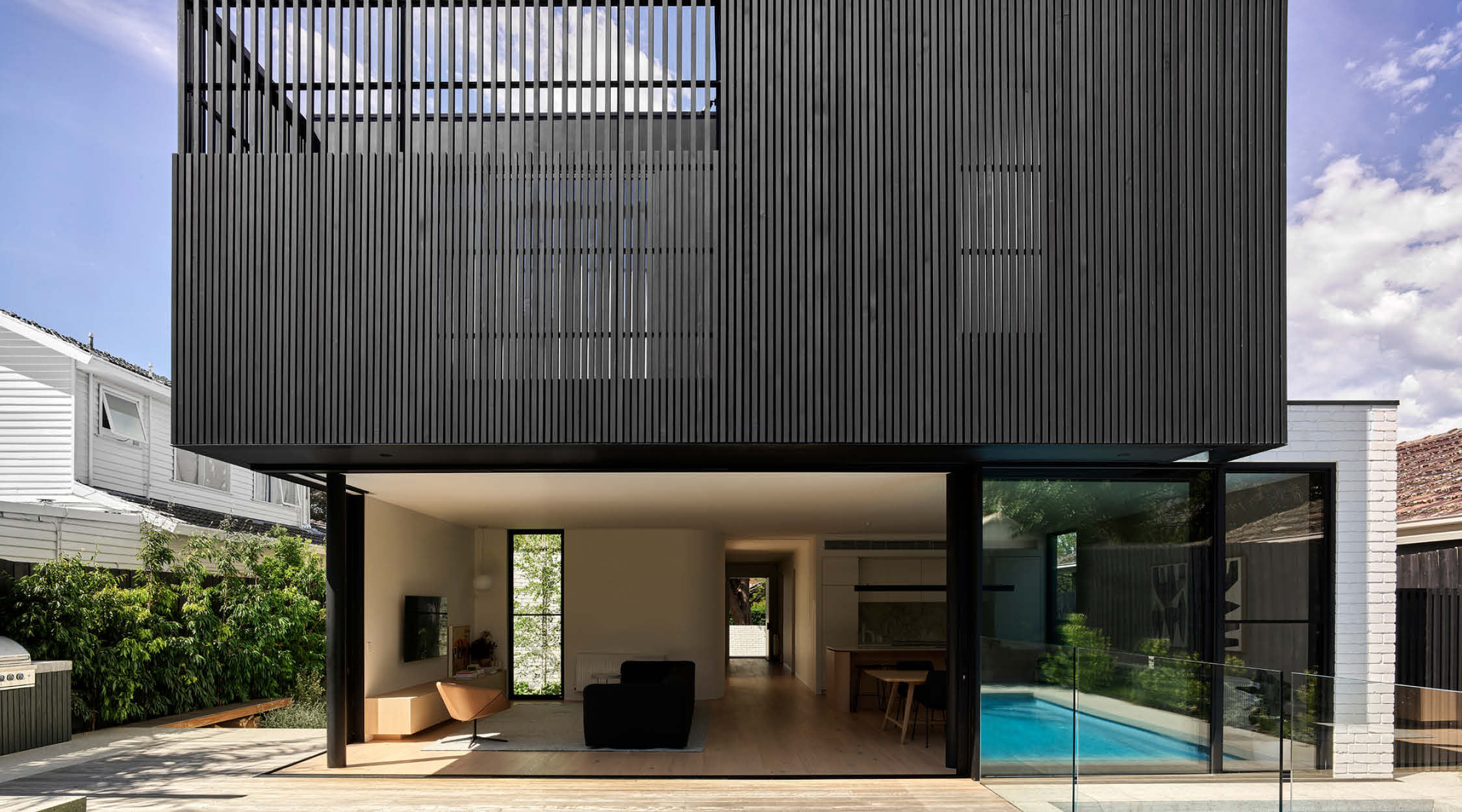
WALA’s Eliza House Is A Fuss-Free Home Meant to Last
Designed by Melbourne-based architectural firm WALA, Eliza House is meant to respond to the owners’ present and future needs. The house is located in an enviable neighborhood pocket of Black Rock in Australia, which is walking distance to the Sandringham Beach Foreshore Reserve. The owners want to lay roots with their young family in this Bayside community. Hence, building their home here.
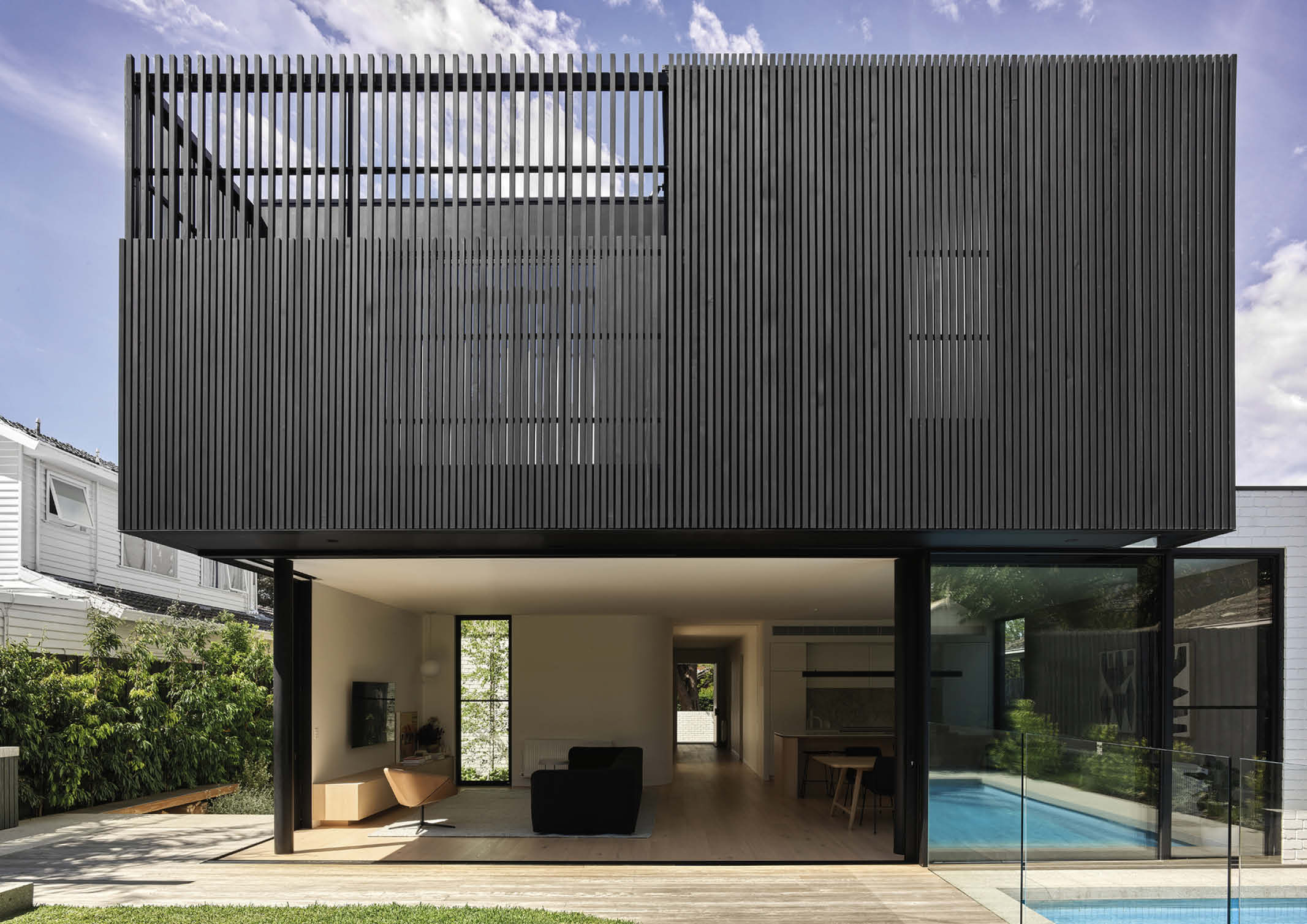
According to the architect, a post-war double-fronted brick-veneer house used to stand on the lot. It was part of the common building stock of its time and did not hold any heritage significance. The old house had low ceilings and an awkwardly laid out horse-shoe internal configuration that are similar characteristics of its Post-war pedigree. For this project, the architect took a knock-down/rebuild approach to design a fuss-free home that will last them for years.
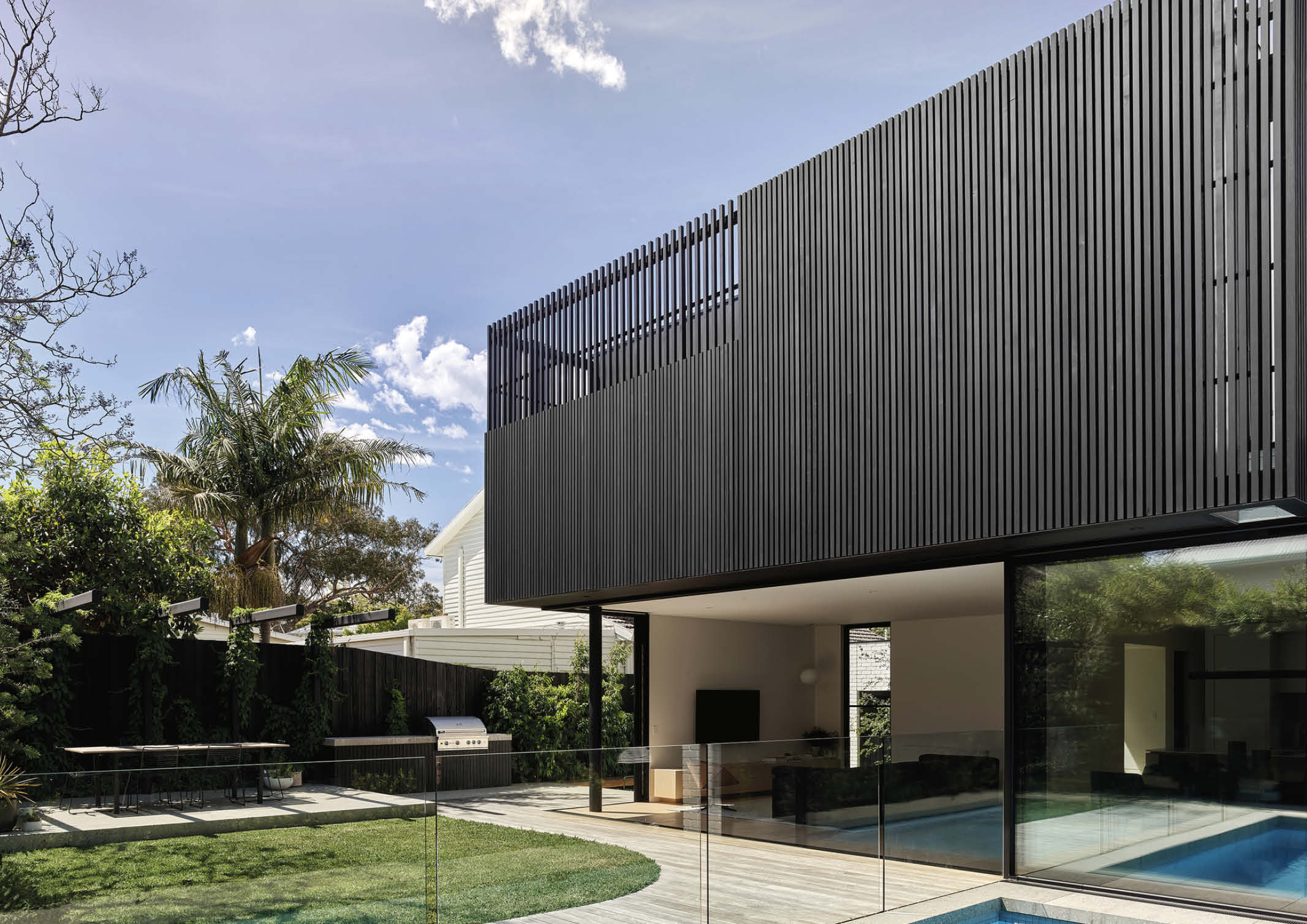
Despite having no heritage significance, the team made a conscious decision to retain and edit parts of the existing fabric, which is the ground level exterior walls. This was inspired by the original horse-shoe-shaped building layout that prioritized an east-facing courtyard that enjoyed beautiful morning light.
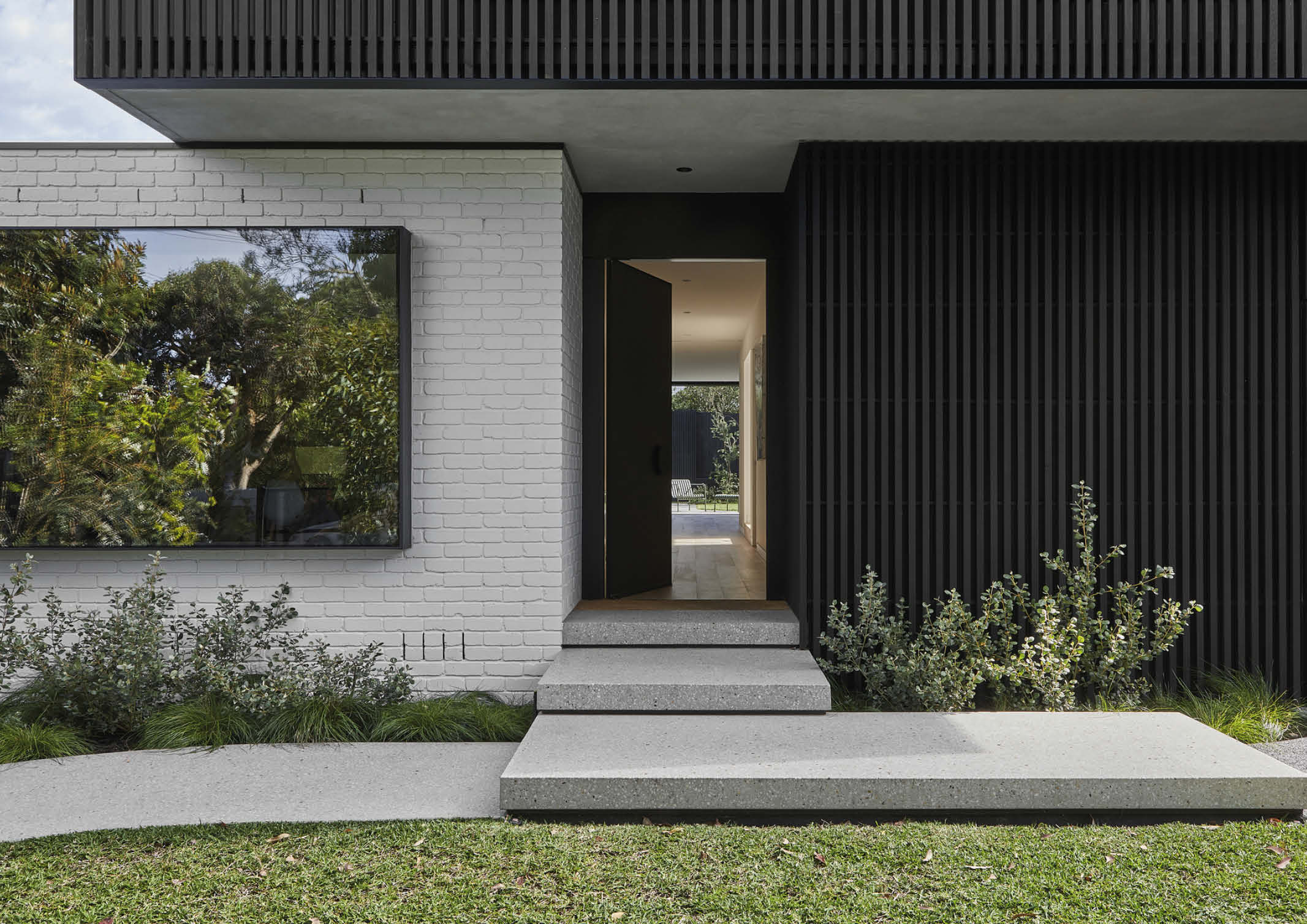
The architect retained the short sections of the existing brick-veneer walls as best they could, mainly along the western and northern faces of the building. A new front entry was orientated to be centered with the true spione of the house to lead unto a generous hallway that expands into an open plan living space which further spills outwards to a well-curated backyard.
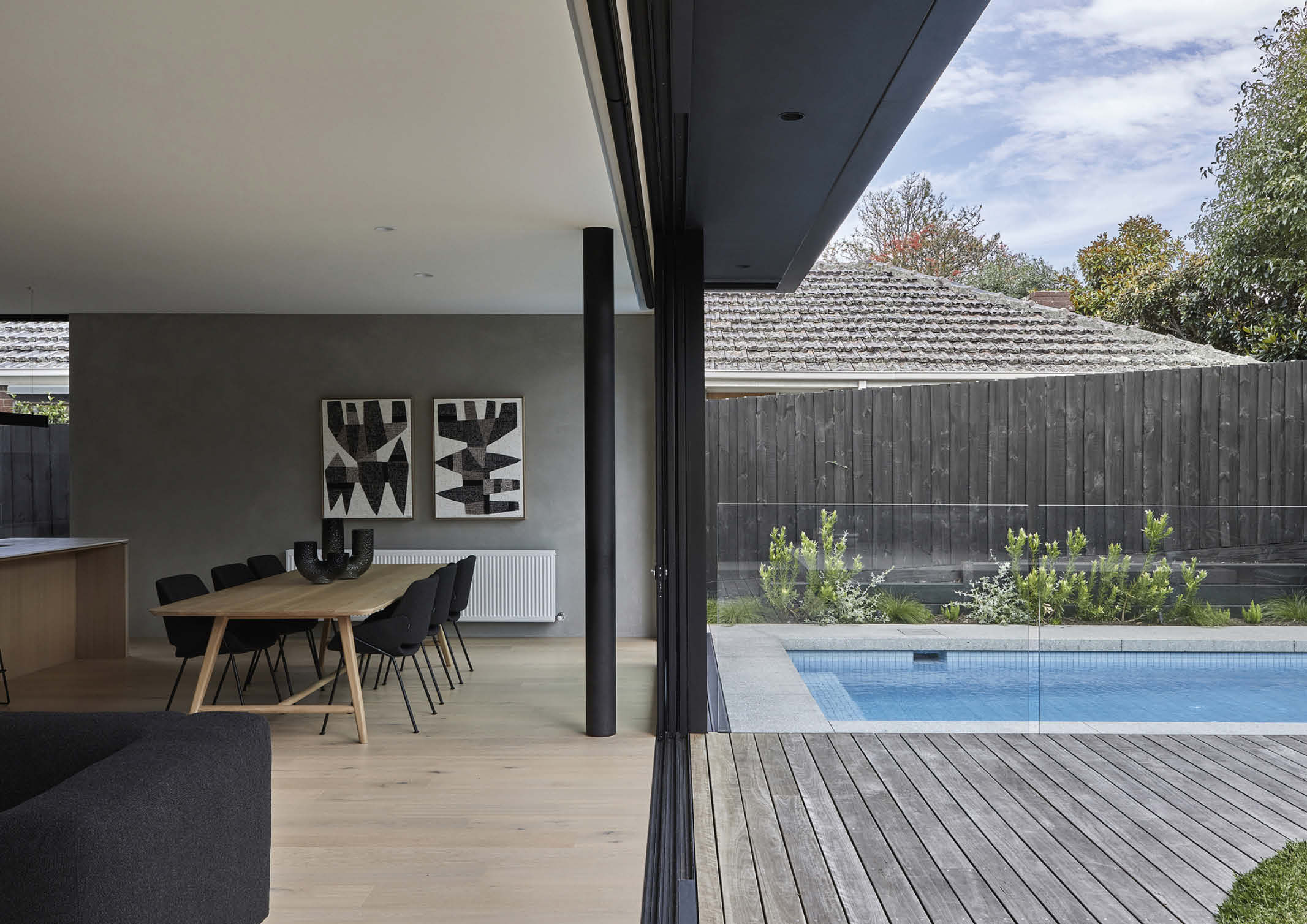
The team also managed to stack or conceal full-height glazed sliders to allow the living spaces to open up completely to the outdoors. Having zero thresholds between interior flooring and exterior decking has further emphasized the indoor-outdoor connection, bringing borrowed amenities and a full 180 degree view of the garden inside.
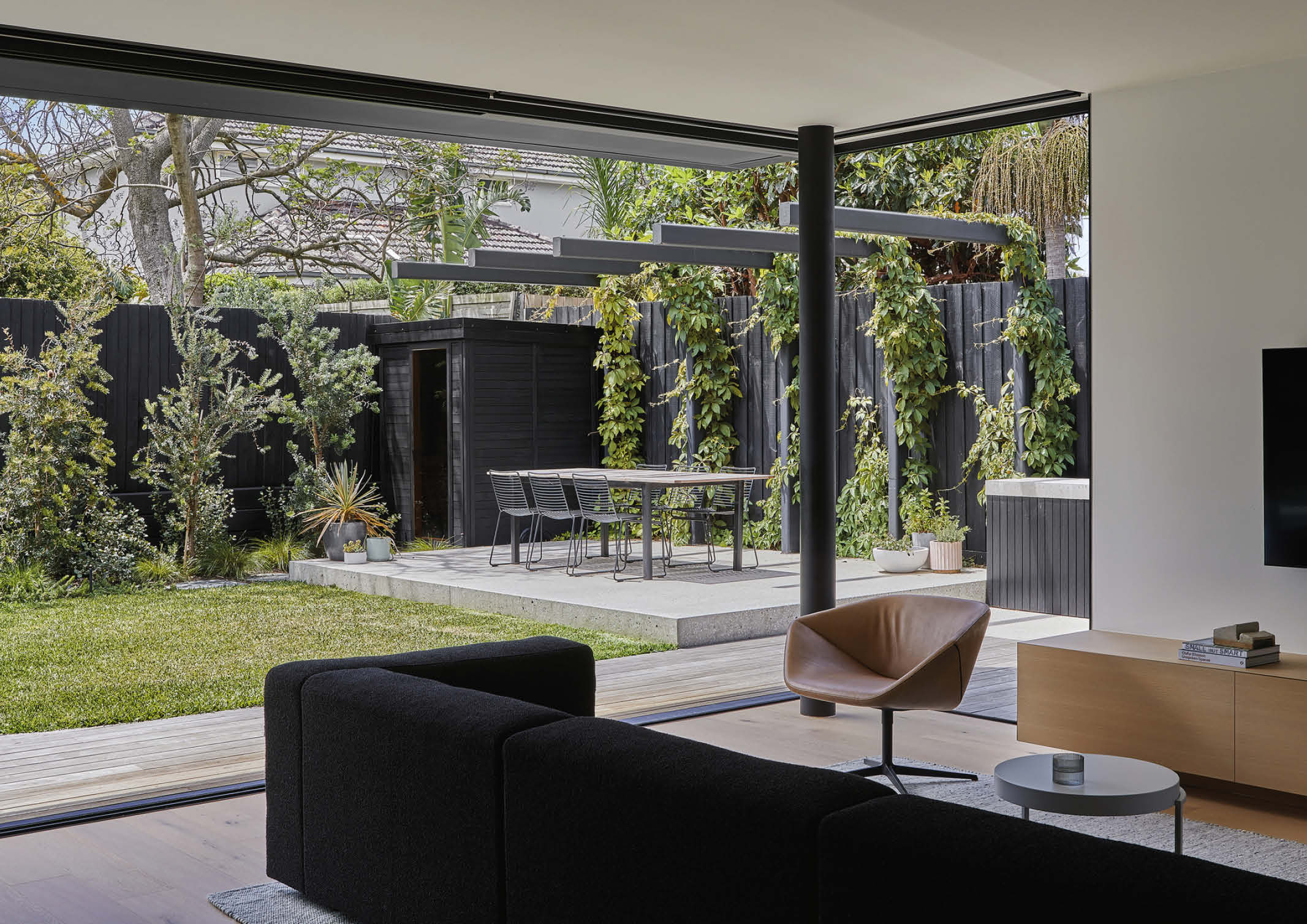
Moreover, the large windows from the stairwell that looks out to the central courtyard properly illuminates the front hallway. They capture morning light in a warm glow and paint the space with shadows from the lush landscape of the outside. Curved walls gently lead into the north-facing living room which feels constantly light and airy throughout the year.
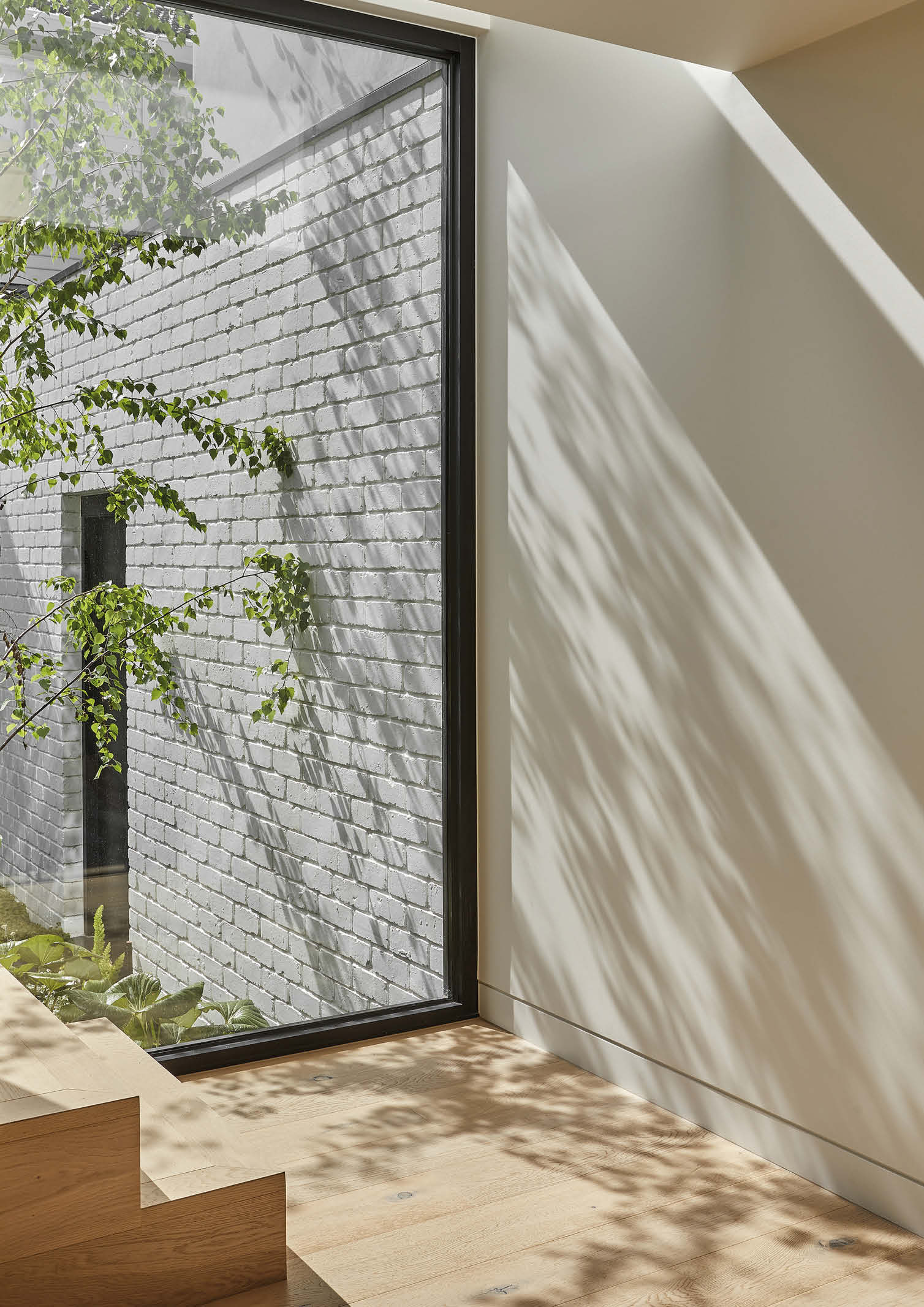
The open plan living space downstairs offers a generous feel. Despite that, the design of the house focuses on the privacy of neighbors with custom cedar screening to both the front and rear upper-level facades.
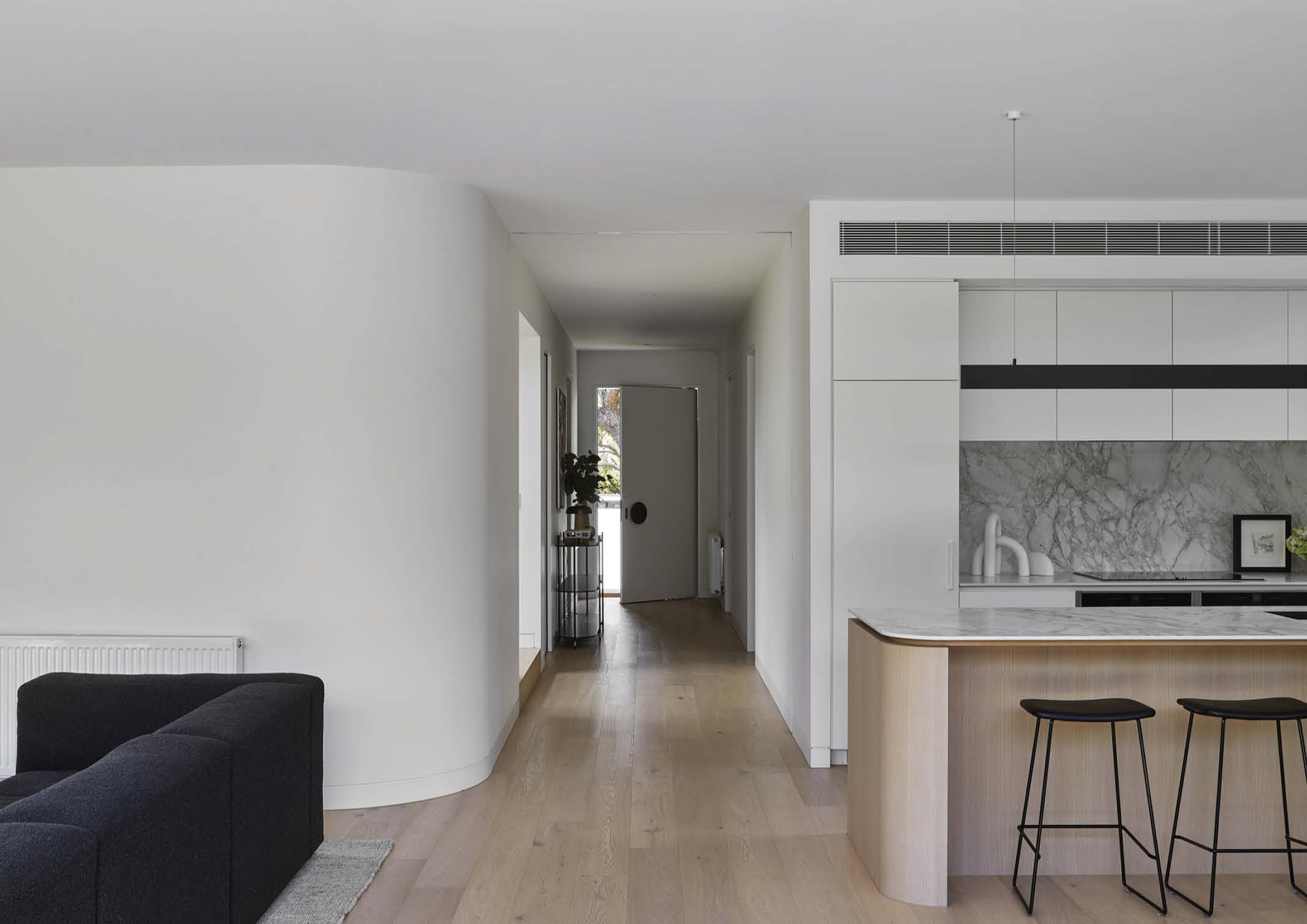

The intention of the house is to last for many years. That is why the architect purposely selected high-quality, long-lasting materials, and proven construction methodologies for their time-tested qualities. Exterior finishes of black timber battens, white-painted recycled bricks, and a velvety gray cement render collectively from a sophisticated material palette that is understated yet timeless.
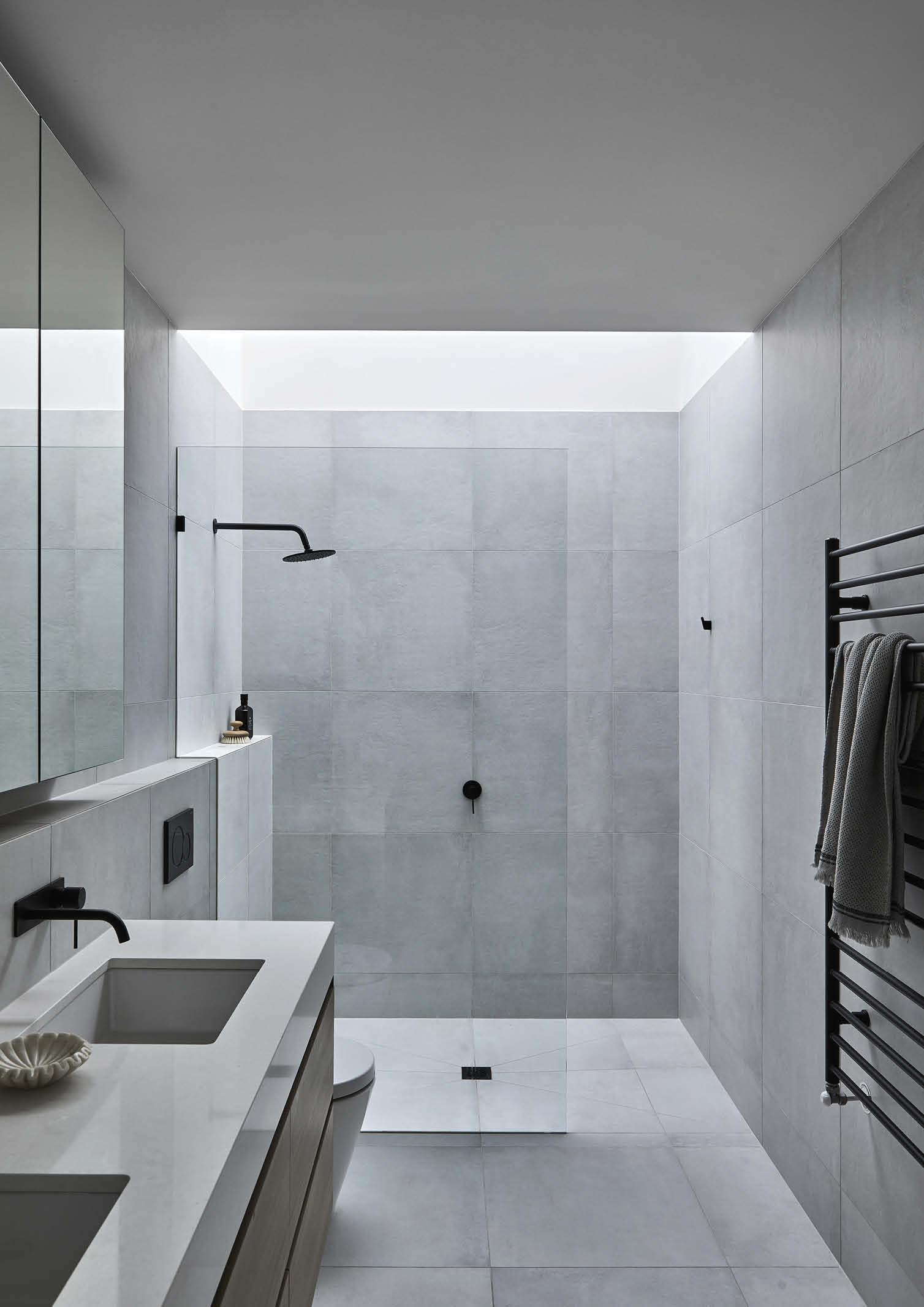
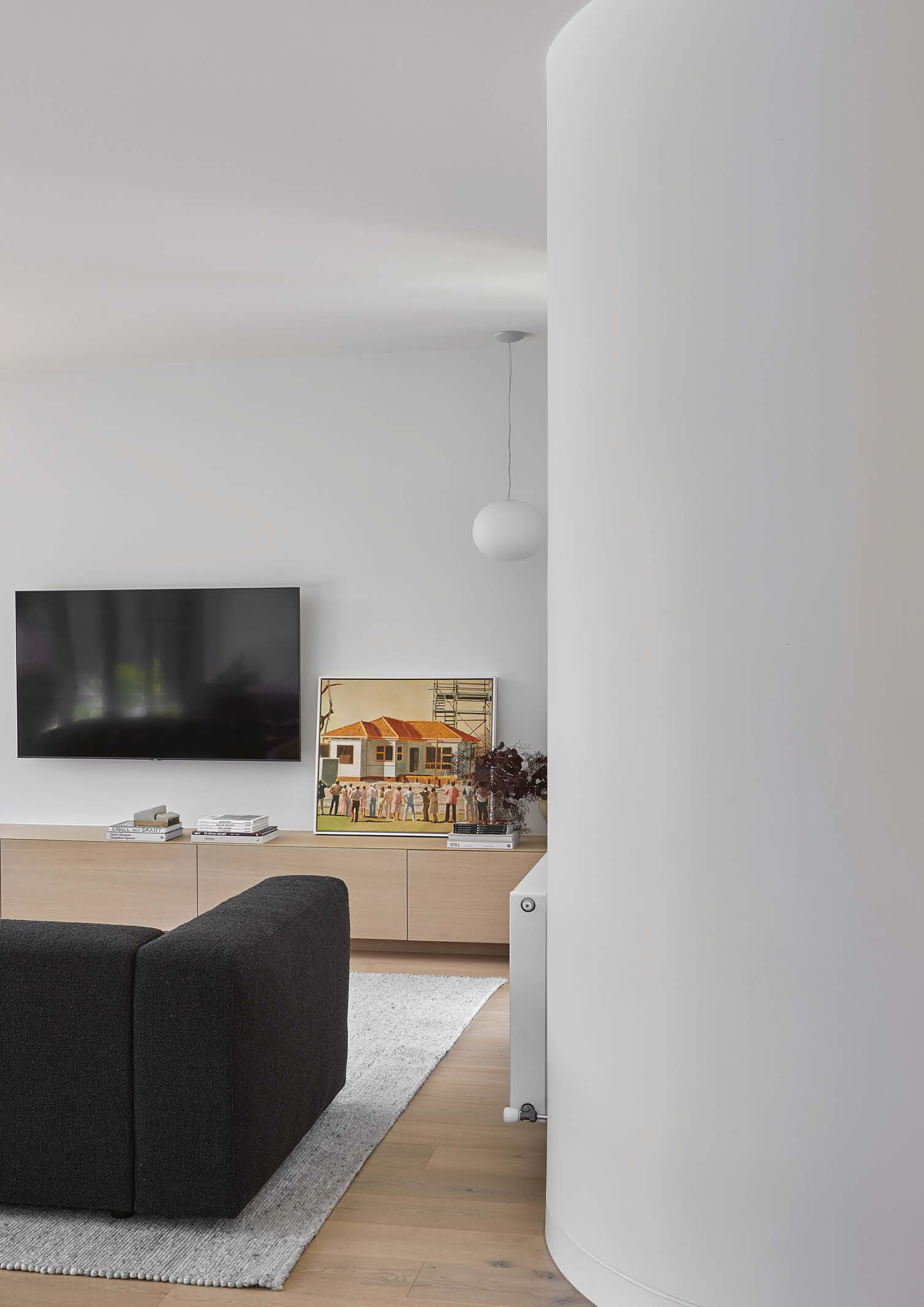
The architect explains that the color palette was intentionally monochromatic to pair with the subtle textural qualities of the building materials. The restraint palette is not meant to overwhelm the streetscape when viewed from the street. Instead, it should sit quite comfortably in the leafy neighborhood pocket.

The private rooms are characterized by darker color schemes, giving them moodier persona that contrast the light and open feel of the shared family spaces. The library, for example, has a deep feature-window steel reveal that doubles as a bay window, colored black. The dark tone continues with matte black cabinetry and a graphite black quartz hearth for the open fireplace.
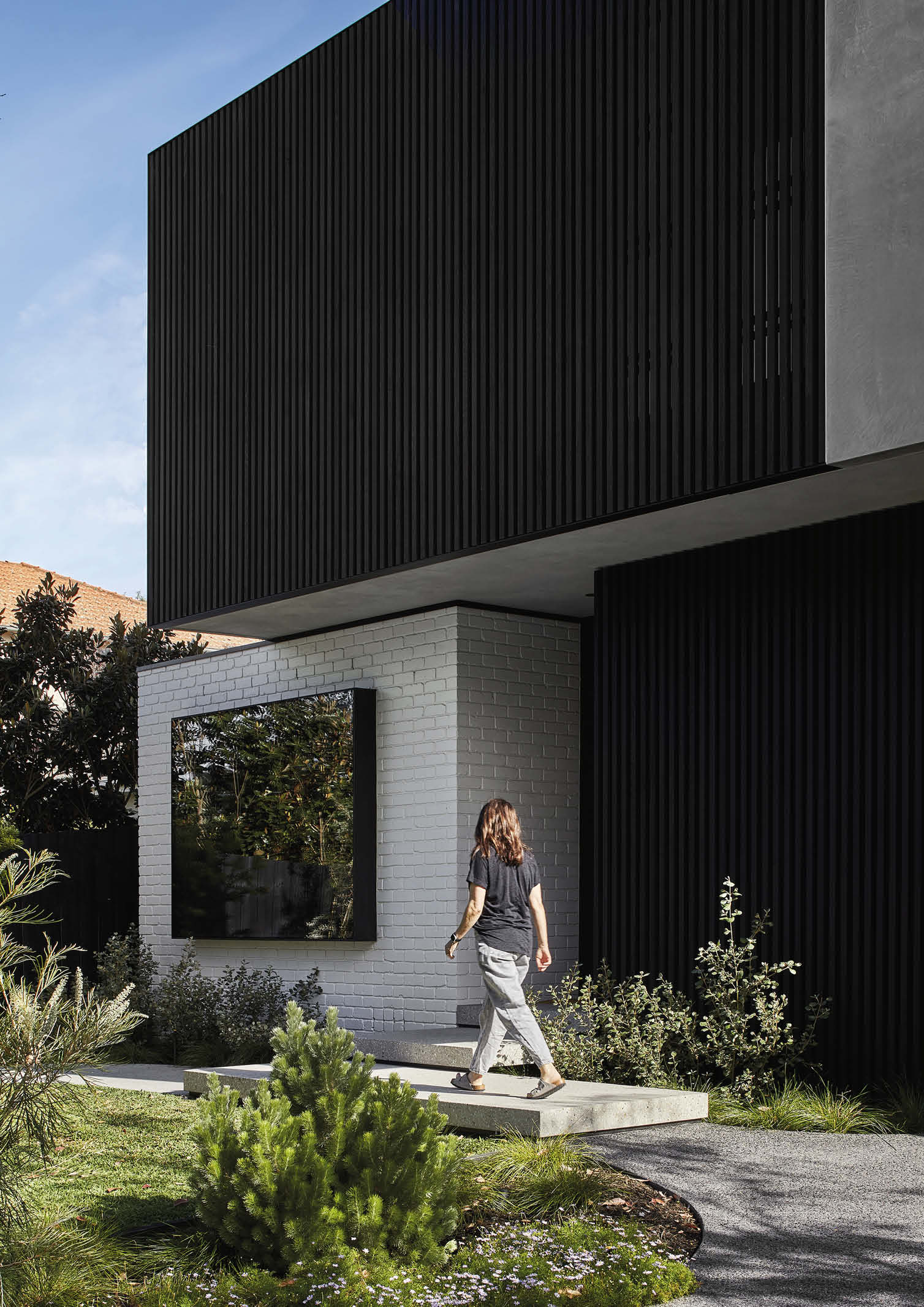
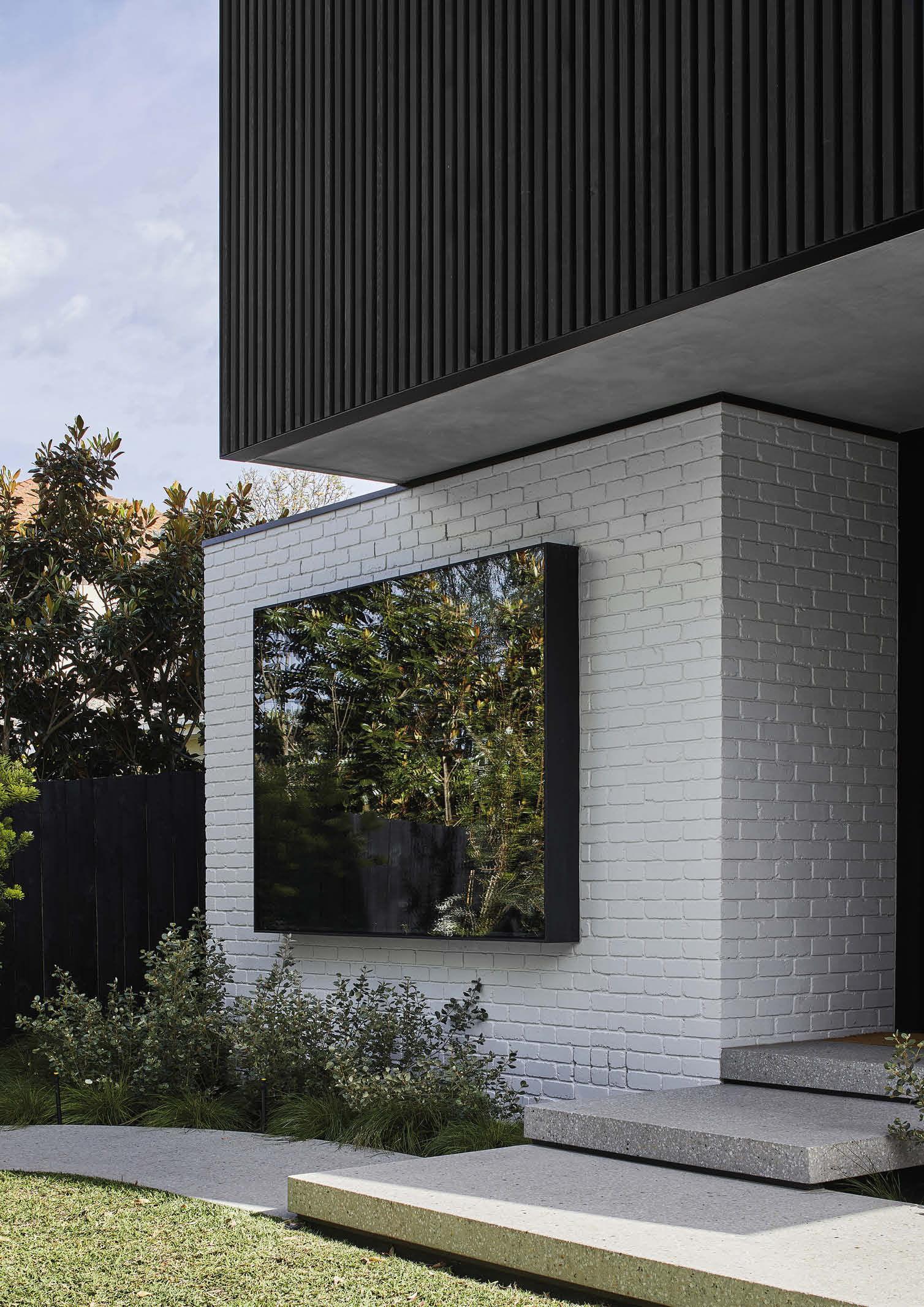
Warmer wood-veneered joinery and strategic ambient lighting offset the dark tones. The application of timber in joinery extends throughout the house to tie all these pieces in a consistent material and visual language. Meanwhile, a cement-rendered feature wall in the dining space echoes the velvet finish of the exterior walls. This strengthens the relationship and visual consistency of the inside and the outside.

When it comes to spatial planning, the architect explains that the eventual physical footprint of the new house is not larger than its surrounding neighbors. The spaces within in, however, do feel generously sized due to its high ceilings, clever use of windows, and efficient spatial planning.
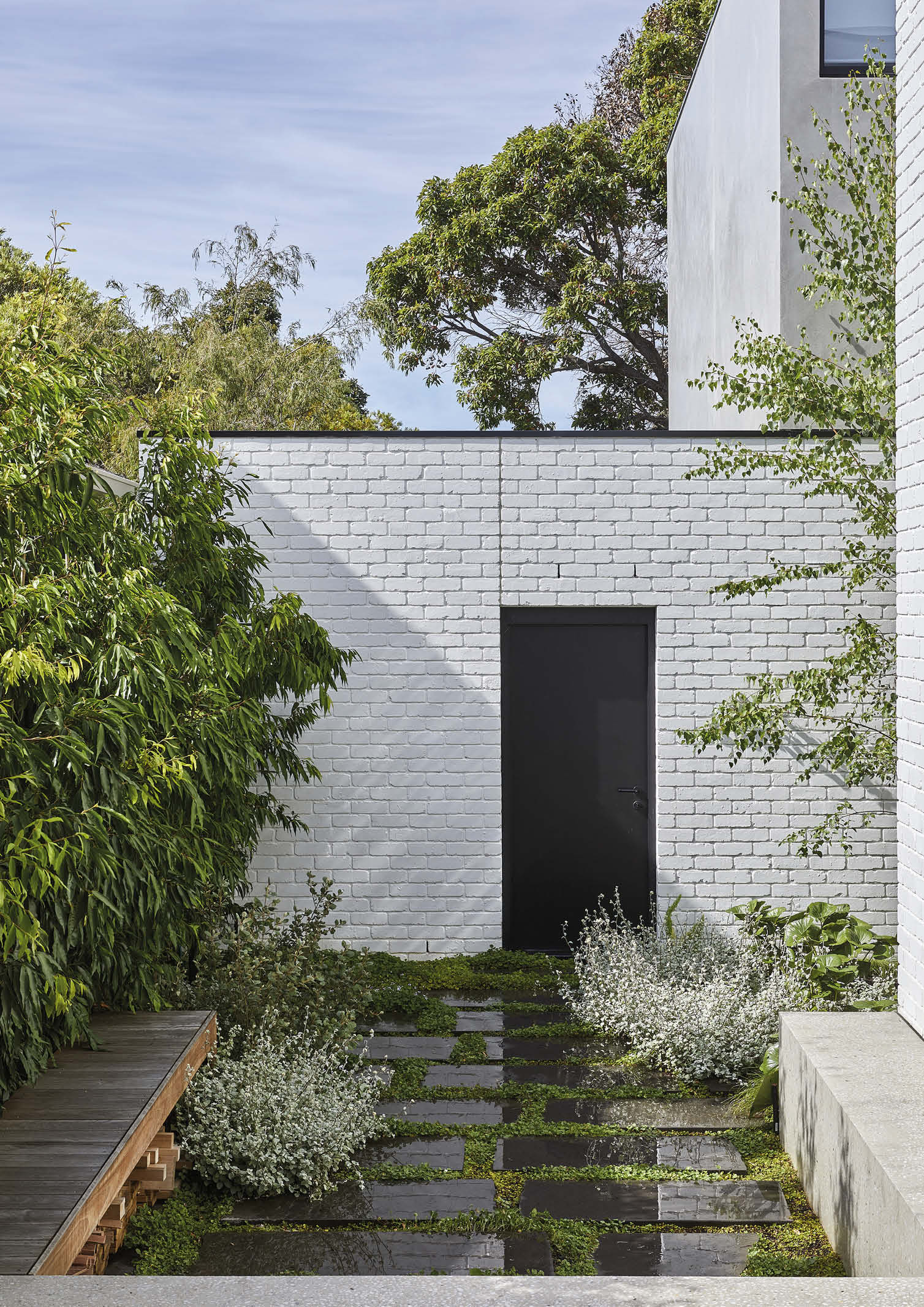
Gardens and landscaping have the space to breathe and occupy their own parts around the house. In time, they will complement and soften the angular edges of the building’s skin. The north-facing backyard enabled the rear living spaces to open to it and reap the benefits of a northerly aspect.
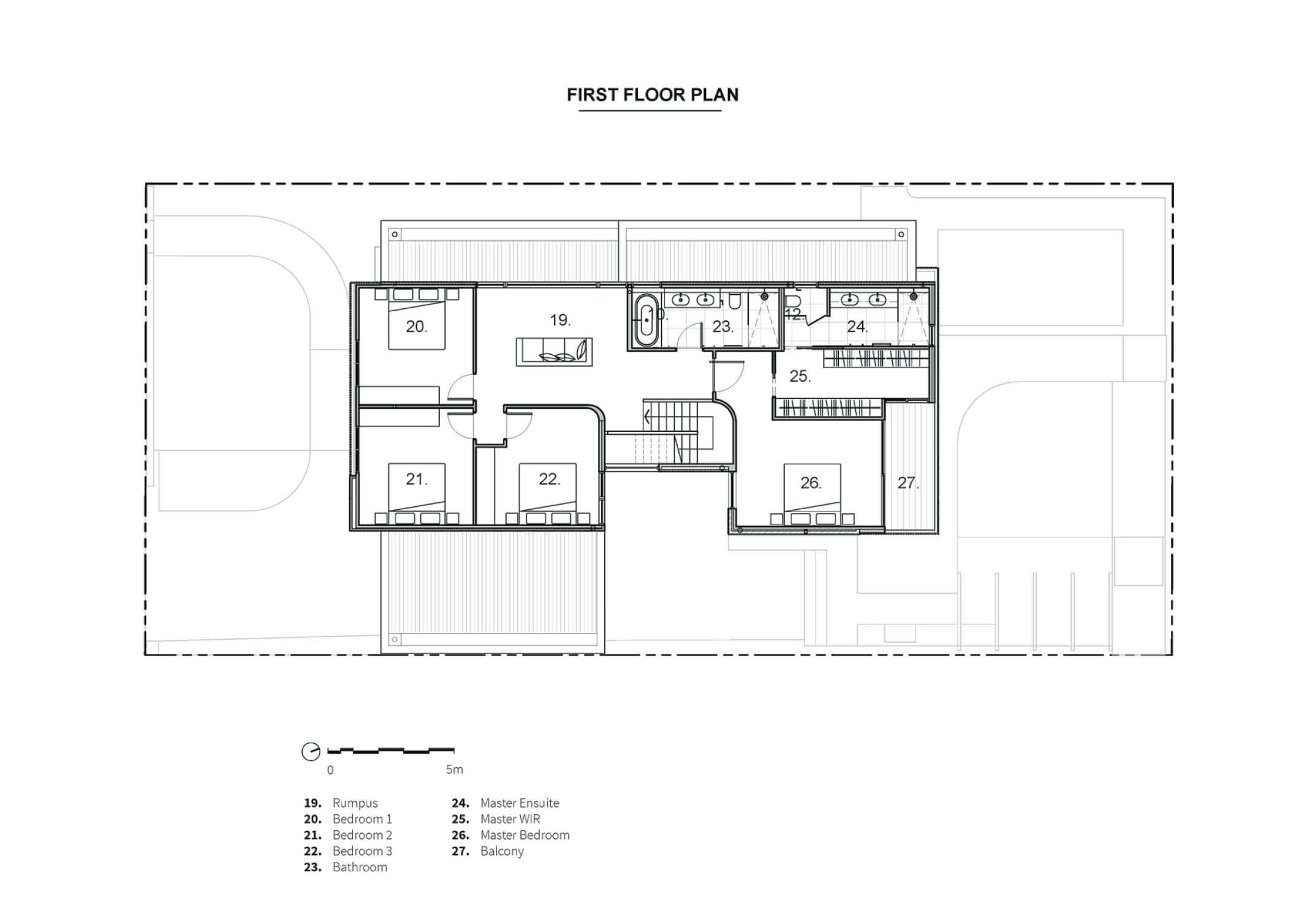
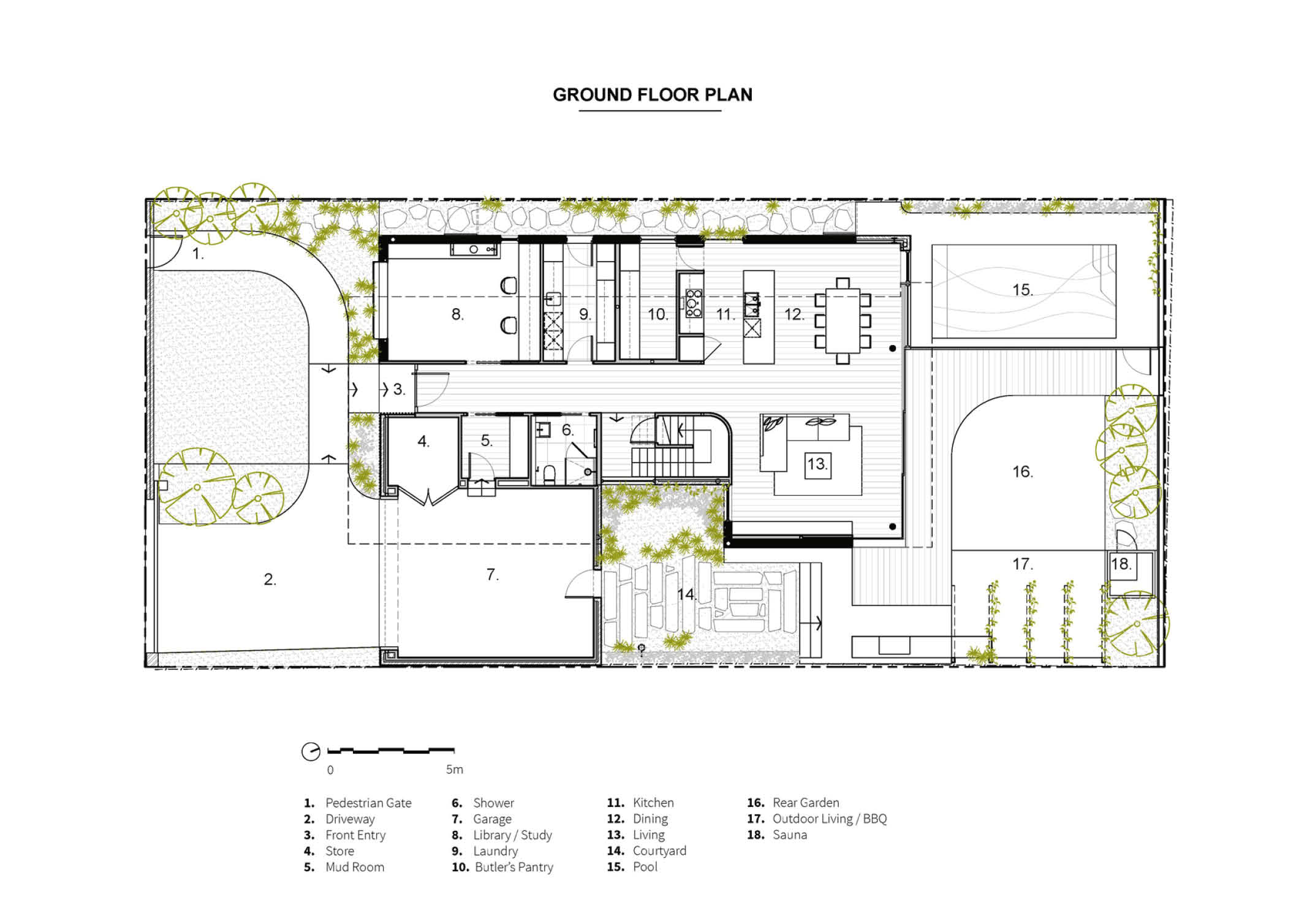
Lastly, outdoor recreational facilities like the pool, sauna, and barbecue platform are well-placed to be in full view from the indoor living areas. The ability to completely retract the glaze sliders means that a good cross flow of air can be maintained downstairs.
Photos by Dave Kulesza


